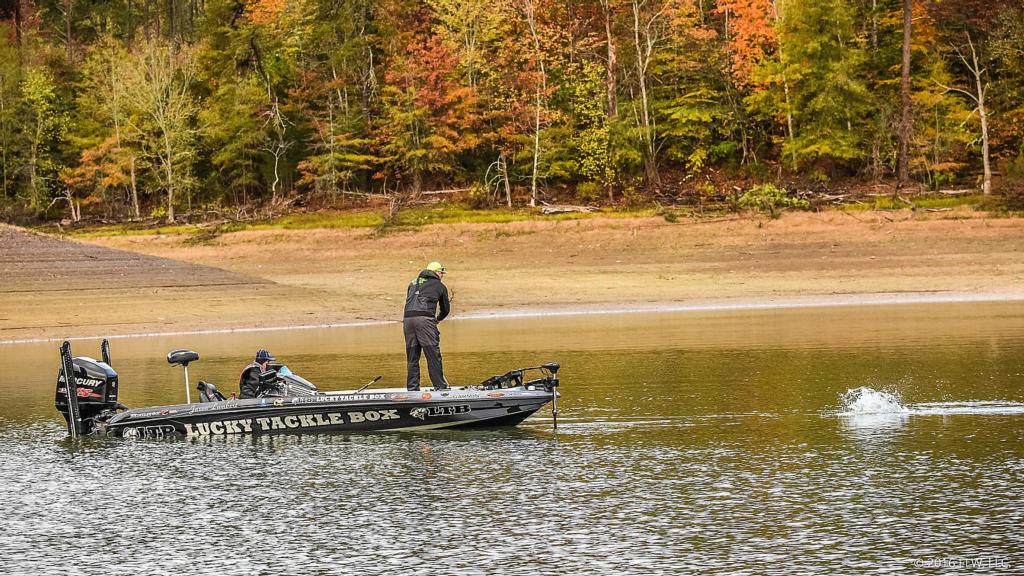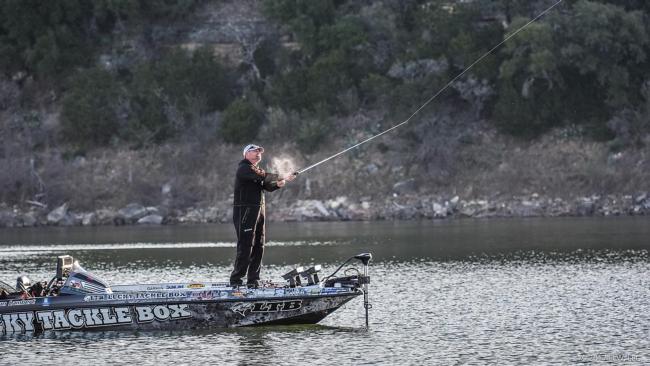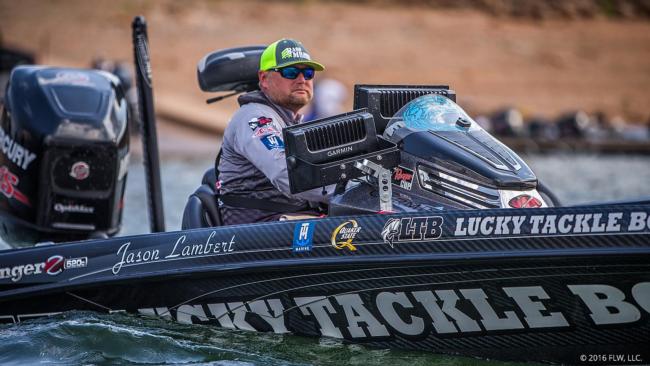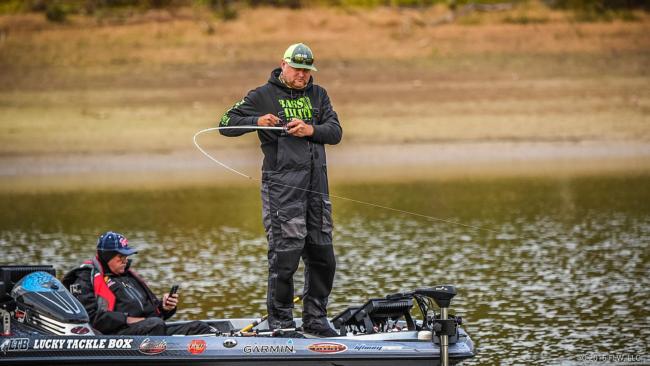Cranking in the Deep and Cold
Jason Lambert moves out deep to catch big fish in the late fall

Jason Lambert can always be found fishing offshore. Yet, even this seemed odd for him.
Here it was, last week of October, and almost the entire field of the FLW Tour Invitational on Norris Lake is doing what you’d expect – burning up shallow flats and bars with topwaters. Afterall, the time of year and conditions couldn’t have been better for topwaters.
Only, Lambert didn’t seem to get the memo. Instead, he was bombing a deep-diving crankbait to some unseen structure up the river, and catching fish after fish. If not for the reds and yellows of the foliage in the background, it easily could’ve looked like a scene from early summer on a Tennessee River lake.
He ended up finishing second to James Watson by a mere 3 ounces, and many chalked it up as a fluky occurrence on a relatively unknown body of water. Then he replicated it two weeks later. This time, it was at the 2016 Costa FLW Series Championship on Table Rock; a far-better-known fishery. There are few secrets on Table Rock, but there was Lambert cranking some offshore spots up the river to sit in 23rd after the first day. His bite fizzled on day two, but by then he’d let the cat out of the bag.
Fall isn’t just a time for topwaters and skinny water. It also offers some prime, untapped offshore power fishing.
Why Deep?
Lambert doesn’t ever need a reason to fish deep, but what he found at Norris and Table Rock gave him the prime excuse to try it. Namely, water color.
“The biggest reason I ran up the rivers was water color,” says Lambert. “The basins on both those lakes were gin clear. You can fish deep there, but you have to use finesse tactics. That’s not my game. I’m a power fisherman.”
A lifetime of fishing offshore on Pickwick and other Tennessee River lakes has also taught him that while the fish will go shallow for the gizzard shad spawn in the fall, there’s usually a solid population that filters back offshore come September and October, schooling up in predictable spots just like they would in the summer.
“The fish winter offshore, and I’ve found a lot of them show back up out there faster than people think,” says Lambert. “Bass are predators. So they’re going to live where the bait is at. While the gizzard shad may be up shallow, there are still plenty of other shad still out deep, especially up the rivers of a lot of lakes. There is usually less grass and cover up there, so the shad are more likely to sit out deep on structure.”
Time to Idle
Summer offshore fishing usually means hours of idling to find schools of fish that may relocate often on miles of structure. Fall offshore fishing still requires idling, but it’s far easier to find fish.
“I’d say 95 percent of the time the fish are on obvious structures you can see clearly on your map,” says Lambert. “They don’t get near the pressure in the fall, so there’s no reason for them to move.”
At Norris, Lambert had a milk run of ditches/drains coming off the bank where schools had set up in about 12 feet of water. He says most were one-fish spots, but one had a rock pile on the side of the ditch, which is where he caught the majority of his fish.
Lambert approached Table Rock much like he would Pickwick, finding schools where the main channel swung up against points in 15-20 feet of water.
In both situations, he looked at his map for what he figured would be the best, most-obvious offshore spots, and bounced around quickly idling them looking for schools of bait or bass.
Deep Power
If the idea of untapped fall fishing wasn’t enough to get your attention, catching these fish power fishing as opposed to slow, subtle, finesse tactics definitely should.
“It’s almost exclusively a crankbait bite,” says Lambert. “Every so often I’ll get one on a jig or on a worm, but it’s really a reaction bite.”
For Lambert, that means crashing his 6th Sense Cloud 9 Series crankbaits – usually the C15 or C25 – into the structure, deflecting it off the bottom.
“You gotta touch bottom or else you won’t get bit,” Lambert stresses.
However, as great as it can be to crank on a giant school of bass, the pattern can have a short lifespan depending on the conditions. Just like up shallow, the crankbait bite offshore usually starts to die once the water temperatures hit the mid 50s, and even if they stay above that, Lambert usually has found the bite tails off by the first week of November, regardless.
“That’s what happened at the Costa Championship,” says Lambert. “I knew my bite was going away because we were already into November. If the tournament was a week earlier it would’ve stayed great. Instead, I caught what I could the first day and they were gone to their winter spots by the second.”


